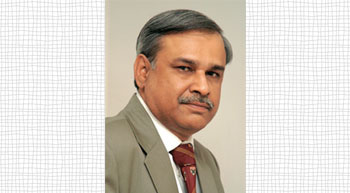We need to improve our infrastructure, and if someone asked, by when, the obvious answer will be yesterday! According to a study by S&P Global Ratings, the country´s poor infrastructure is the biggest hurdle to the government´s ´Make in India´ programme, and they went on to add that the infrastructure deficit is costing the nation up to 5 per cent of our GDP. Apparently, every rupee invested in infrastructure has a ripple effect on the economy and generates value worth Rs.2 for the GDP.
Interesting examples of this ripple effect have emerged from the emerging economies, says the Economist magazine; in Morocco, paving of roads has helped improve girls´ attendance in schools, while in India, improved sanitation facilities have helped lower child mortality by as much as 50 per cent. And our Finance Minister said, we need $1.5 trillion over the next decade to close this infra gap, as we might call it. Alternatively, a study by CRISIL determined that we need Rs.31 lakh crore for building up our infrastructure in the next five years. Either way, it´s a staggering number!
Can this huge amount of money come from government´s budgetary support alone? It seems quite clear that we shall need a substantial component of this investment to come from private entrepreneurs, including investors from beyond our borders, all of which can only come through public private partnerships. But, our country´s track record in attracting PPP investments has been rather dismal.
The World Bank says in its report, that in 2015, PPP investments in India´s infrastructure have hit the lowest in 10 years. From a peak of Rs.58,000 crore in 2008/9, PPP outlays have fallen to `23,000 crore in 2015/16. So, what is ailing our PPPs?
The date was 18th Nov 2015. The committee headed by former bureaucrat Vijay Kelkar submitted its report to the Finance Minister on this day. This committee was requested to suggest ways of improving capacity-building within the government for effective implementation of PPP projects. The panel´s terms of reference also included a review of existing PPP policies, analysis of risks involved in such projects and existing framework of sharing of such risks between the private developer and the government. All very important issues, indeed, and the observers of the infrastructure sector will be keenly waiting to know the government´s action plan arising from these recommendations. Recommendations and suggestions and prescriptions are anyway coming in thick and fast from many quarters on how to make PPPs work and thrive, and the government may well be spoilt for choice.
However, if I were asked how to build capacity in the government to attract private investments and effectively implement PPP projects, I would only suggest devoting all our energy and resources to just one thing – to help shed the adversarial mindset in the whole government machinery towards the private sector, and bring along a mindset of partnership instead. It does sound easy, but it is easier said than done. Most of the government hierarchy has been bred in a culture of feudalism over 70 years, is extremely oriented towards control and biased against profit-making private enterprises.
In case of a dispute, the government is always right. The deficit of trust between the two traditionally opposing sides is phenomenal. Look at the way the government bodies and/or bureaucrats have recently retaken control of flagship PPP organisations like NSDC, IBEF (India Brand Equity Foundation) or Invest India.
How can our governing officials and ministers and the trustees of the public, discard this hostility and acquire a partnership mindset? Wonder if the Kelkar Committee has given any suggestions on how to achieve this transformation of minds. Or, does the answer lie in moving from 3P (PPP) to a 4P model as suggested by our Prime Minister, which may perhaps be an inclusive framework with the addition of the people perspective, in addition to the public and private partners. If it is so, it´s an awful admission that our public bodies and officials are unable to truly represent the interests of our people.



Leave a Reply
You must be logged in to post a comment.